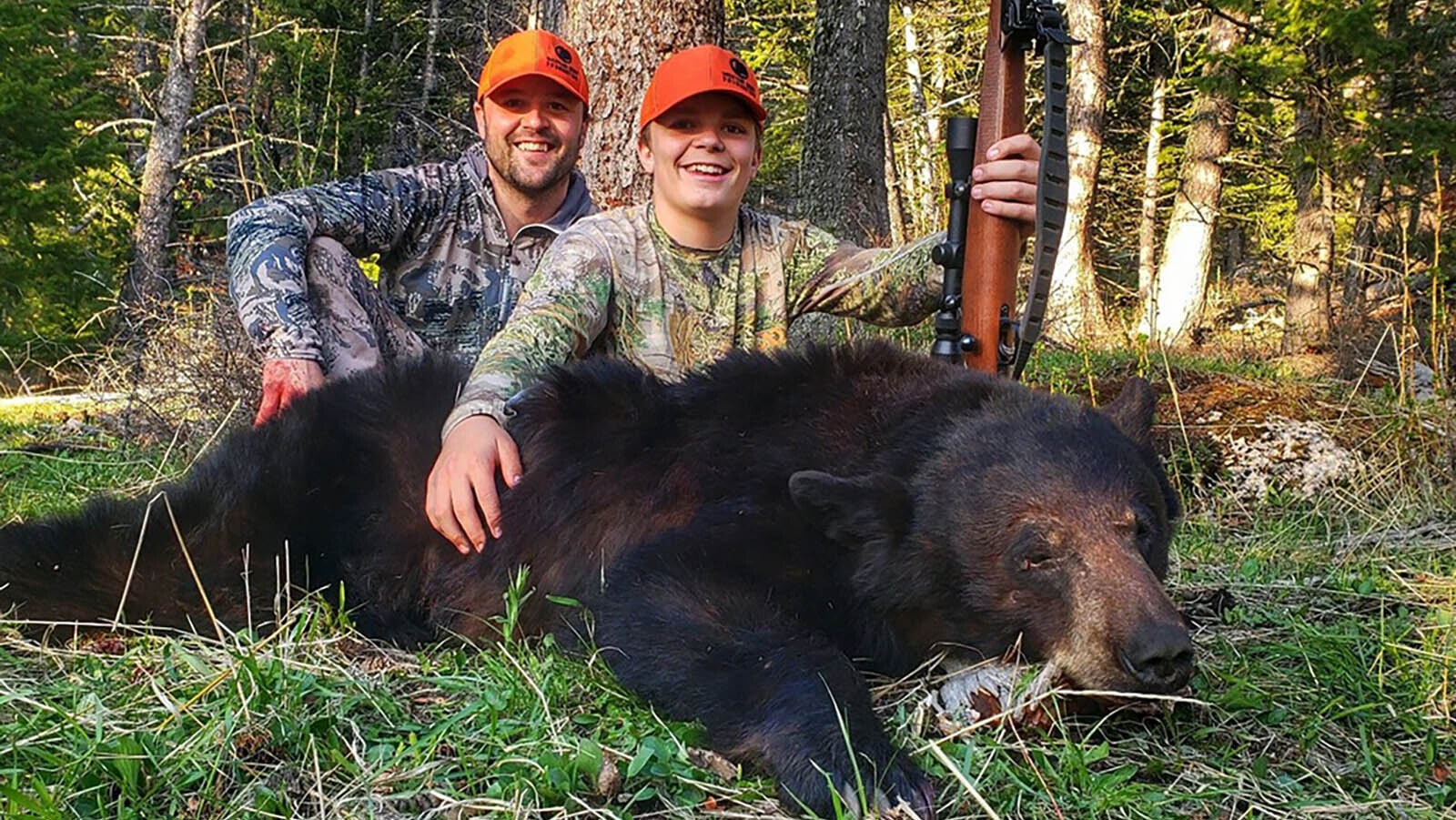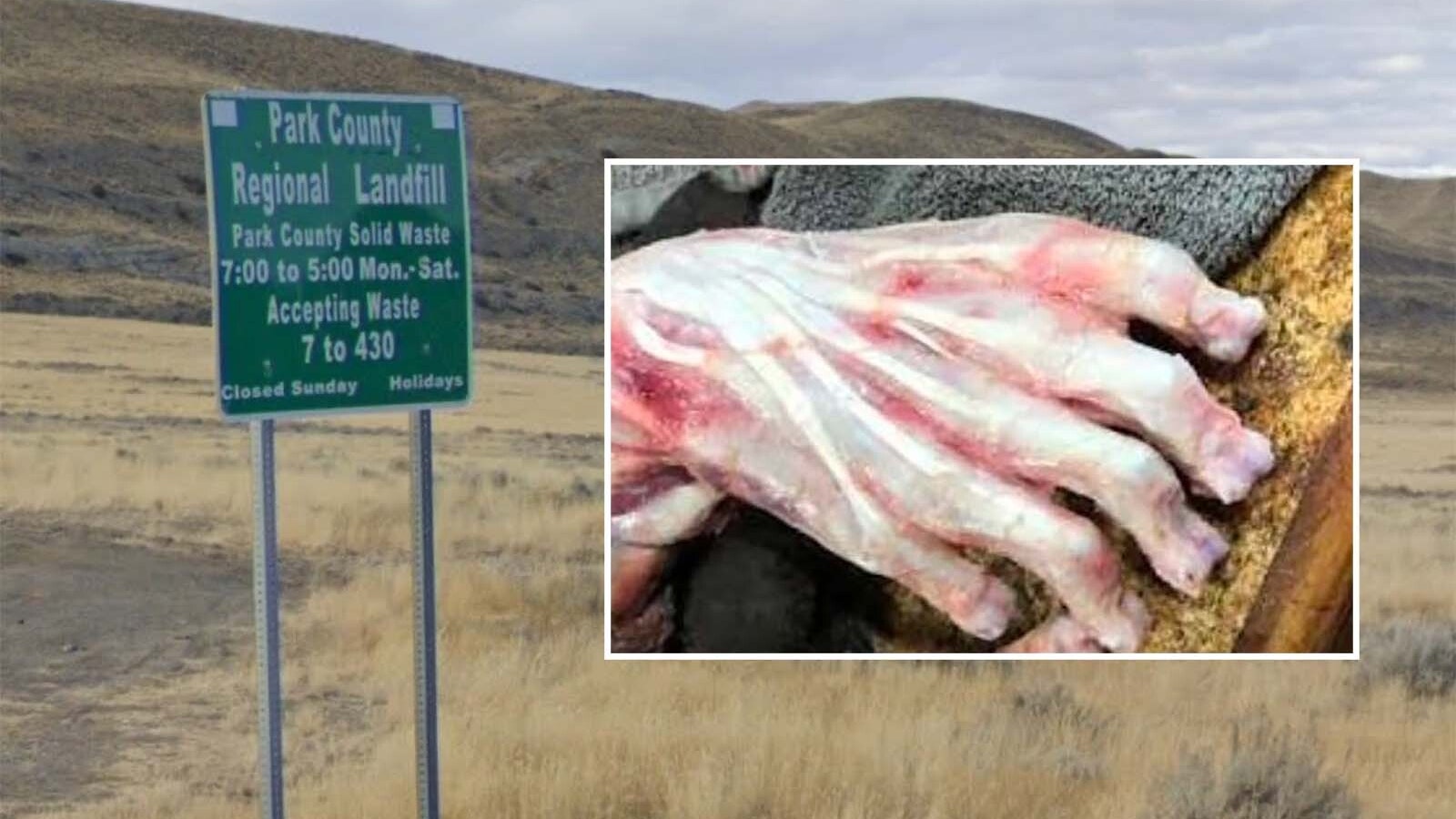Much of Wyoming’s mountainous bear county is buried in massive amounts of snow, and with even more expected before spring black bear hunting seasons open in May, things might seem grim for hunters.
Depending upon how things play out, however, the snow could actually work in favor for hunters, an avid Wyoming bear hunter said.
Hunger Could Drive Them Down
“The bears need to eat, so they’re going to dig themselves out eventually, but access (for hunters) is going to be a challenge with all of this snow,” Joe Kondelis of Cody told Cowboy State Daily.
An avid bear hunter and president of the American Bear Foundation, Kondelis said that if hunters can’t get into the mountains to go after bears, with luck the bears could end up coming to them.
“When the bears do come out, they could be forced down to the lower elevations,” he said. “They’re going to start moving toward the green grass, which could be a long way, depending upon where they denned for the winter.”
Black bears like hibernating in mountain dens, but at elevations that can vary widely, Kondelis said.
“I’ve seen them (dens) at 10,000 feet and I’ve ben in bear dens that were down around 6,000 to 7,000 feet,” he said.

Season Could Go Longer
Most Wyoming black bear hunting seasons run into June, but they can be shut down early.
“We are on a female mortality quota system in Wyoming,” Kondelis said. “If the female quota is filled, the season is over.”
He was referring to how bear seasons are determined by the number of bears that can be legally killed in a hunting area, particularly female bears. Once the quota of female bear fatalities is reached in a hunt area, hunting is closed there regardless of how many bear hunters are left still holding unfilled tags.
During a typical spring, that means the seasons can end rather quickly.
But if the deep snow makes it more difficult for hunters, and the bears don’t come down out of the mountains, the quest for bears could be prolonged this year, Kondelis said.
“We’re going to get some bears this year, it might just be later when it gets to where the hunters can get into them,” he said. “I don’t think we’ll see an abnormally low harvest of bears, it just might be a little later into the seasons before all the quotas are filled.”
Spot-And-Stalk Vs. Baiting
Then comes the question of the most effective hunting strategy. Both bear baiting and spot-and-stalk techniques are allowed in Wyoming.
Baiting involves hunters filling bait barrels with tasty temptations, such as meat too spoiled for human consumption, and waiting nearby in a tree stand or ground blind. It’s a game of patience, with the hunter often sitting all day, day after day, waiting for a big enough bear to be drawn into suitable bow or rifle range by the bait.
Spot-and-stalk will require more snowmelt, as it involves hiking around between vantage point to “glass” (scan with binoculars or spotting scopes) for a bear. Once a bear is spotted, the hunter must figure out how to stalk within kill shot range.
“I use both methods, but I love spot-and-stalk,” Kondelis said. “We like to set up bait stations for disabled veterans or youth hunts.”
Tough Identification
Making the distinction between adult male bears (boars) and females (sows) can be difficult, Kondelis said.
“If you’re new to bear hunting, that can be one of the most difficult aspects of it,” he said. “Sometimes if you see a boar from the rear, you can see the reproductive organs.”
Otherwise, there are some characteristics, such as sows typically having a narrower snout while boars have “blockier” faces, he said.
“But that can change with age,” he said. “And older sows can have blocky faces too.”
“Bears are like humans” in the sense of coming in a wide range of sizes and body types, he said.
“We can shoot females, and there’s nothing wrong with that, but we have to be careful about it, because it fills the quota and shuts down the season for others faster,” Kondelis said.
Late Sleepers
A grizzly spotted last week in Yellowstone Park was the first documented bear sighting this spring. Even so, it could be a while before more grizzlies emerge.
And it could be even longer before black bears start waking up, Kondelis said. They might sleep later because their smaller bodies don’t require as much food as grizzlies’ massive frames.
And they also have fewer options. Grizzlies are much better at digging than black bears thanks to their longer claws and powerful “shoulder hump” muscles, Kondelis said. That means they have less trouble reaching roots, buried big game carcasses and other goodies.
Black bears are adapted more toward grazing on fresh spring grass and the like, he said.
“You’ll sometimes see grizzlies out in the winter when the weather is OK,” Kondelis said. “I won’t even start thinking about black bears until about the middle of April.”





